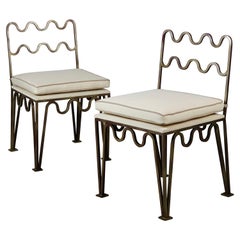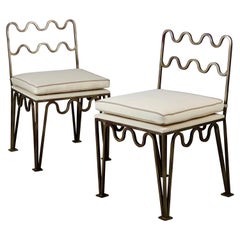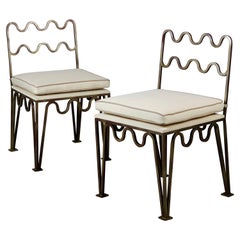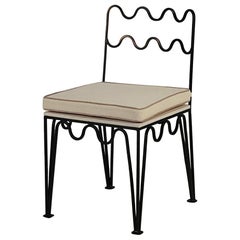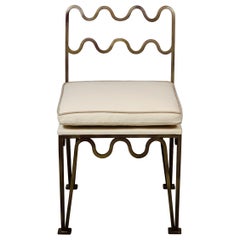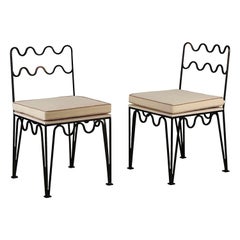Meandre Side Chairs By Design Freres
21st Century and Contemporary French Modern Chairs
Steel
21st Century and Contemporary French Modern Chairs
Steel
21st Century and Contemporary French Modern Chairs
Steel
21st Century and Contemporary American Modern Chairs
Steel
21st Century and Contemporary French Modern Chairs
Steel
21st Century and Contemporary American Modern Chairs
Steel
21st Century and Contemporary French Modern Chairs
Steel
People Also Browsed
21st Century and Contemporary French Modern Side Tables
Steel
2010s Italian Mid-Century Modern Wall Lights and Sconces
Brass
21st Century and Contemporary Asian Mid-Century Modern Benches
Iron
21st Century and Contemporary American Modern Side Tables
Iron
21st Century and Contemporary Swedish Scandinavian Modern Lounge Chairs
Sheepskin, Wool, Bouclé, Beech, Oak, Walnut
2010s Mexican Post-Modern Table Lamps
Ceramic
21st Century and Contemporary American Mid-Century Modern Benches
Walnut, Oak
21st Century and Contemporary American Mid-Century Modern Wall Lights an...
Brass
2010s South African Modern Dining Room Chairs
Brass
21st Century and Contemporary Italian Art Deco Wall Lights and Sconces
Brass
2010s Scandinavian Modern Chandeliers and Pendants
Brass, Bronze
Late 20th Century Italian Neoclassical Coffee and Cocktail Tables
Marble, Brass, Steel
2010s Spanish French Provincial Patio and Garden Furniture
Iron
2010s Italian Modern Chairs
Cane, Wood
21st Century and Contemporary American Sofas
Linen, Velvet
2010s South African Minimalist Pedestals
Lacquer
Design Frères for sale on 1stDibs
Design Frères is an eclectic furniture line designed by Eric Thévenot, owner of Blend Interiors, an exceptional California-based dealer of vintage and contemporary furniture and decor.
Known for synthesizing divergent styles and peppering worldly spaces he creates with works stemming from varying origins and periods, Thévenot is a consummate decorator, and the chairs, tables, case pieces and other furnishings that comprise his Design Frères collection are sophisticated additions to any interior.
Originally from France, Thévenot opened Blend Interiors in Los Angeles in 2005. While the company offers a range of furniture and decorative objects from all over the world — most of which are sourced from its founder’s purchasing trips in Paris — Blend Interiors also offers art advising services and interior design consulting. And the exclusive furnishings he is creating and manufacturing for the Design Fréres collection are part of this endeavor to provide clients with a provocative fusion of design.
"I believe in mixing periods: Saarinen chairs in a French chateau, Louis XVI armoires in a futuristic pad," Thévenot has said. “I like pulling things out of different time periods and re-creating them for today’s lifestyle.”
Building on Blend Interior’s success, Design Frères was established in 2010 and is a growing venture.
Given the broad-ranging tastes and concepts at the core of Blend Interiors, it is appropriate that the Design Frères line is so diverse and interesting — the collection features Art Deco-style end tables topped with travertine and stylish counter stools with handwoven rush seats and slender frames of powder-coated steel. Elsewhere, Thévenot’s white oak shelving systems feature chic space elements and draw on the legendary mid-century modernist storage solutions designed by the likes of Charlotte Perriand and Jean Prouvé, with each piece pairing nicely with the vintage European treasures that Thévenot is prone to acquire on his next trip to Paris.
On 1stDibs, find Design Frères tables, seating and lighting.
A Close Look at Modern Furniture
The late 19th and early 20th centuries saw sweeping social change and major scientific advances — both of which contributed to a new aesthetic: modernism. Rejecting the rigidity of Victorian artistic conventions, modernists sought a new means of expression. References to the natural world and ornate classical embellishments gave way to the sleek simplicity of the Machine Age. Architect Philip Johnson characterized the hallmarks of modernism as “machine-like simplicity, smoothness or surface [and] avoidance of ornament.”
Early practitioners of modernist design include the De Stijl (“The Style”) group, founded in the Netherlands in 1917, and the Bauhaus School, founded two years later in Germany.
Followers of both groups produced sleek, spare designs — many of which became icons of daily life in the 20th century. The modernists rejected both natural and historical references and relied primarily on industrial materials such as metal, glass, plywood, and, later, plastics. While Bauhaus principals Marcel Breuer and Ludwig Mies van der Rohe created furniture from mass-produced, chrome-plated steel, American visionaries like Charles and Ray Eames worked in materials as novel as molded plywood and fiberglass. Today, Breuer’s Wassily chair, Mies van der Rohe’s Barcelona chair — crafted with his romantic partner, designer Lilly Reich — and the Eames lounge chair are emblems of progressive design and vintage originals are prized cornerstones of collections.
It’s difficult to overstate the influence that modernism continues to wield over designers and architects — and equally difficult to overstate how revolutionary it was when it first appeared a century ago. But because modernist furniture designs are so simple, they can blend in seamlessly with just about any type of décor. Don’t overlook them.
Finding the Right Chairs for You
Chairs are an indispensable component of your home and office. Can you imagine your life without the vintage, new or antique chairs you love?
With the exception of rocking chairs, the majority of the seating in our homes today — Windsor chairs, chaise longues, wingback chairs — originated in either England or France. Art Nouveau chairs, the style of which also originated in those regions, embraced the inherent magnificence of the natural world with decorative flourishes and refined designs that blended both curved and geometric contour lines. While craftsmanship and styles have evolved in the past century, chairs have had a singular significance in our lives, no matter what your favorite chair looks like.
“The chair is the piece of furniture that is closest to human beings,” said Hans Wegner. The revered Danish cabinetmaker and furniture designer was prolific, having designed nearly 500 chairs over the course of his lifetime. His beloved designs include the Wishbone chair, the wingback Papa Bear chair and many more.
Other designers of Scandinavian modernist chairs introduced new dynamics to this staple with sculptural flowing lines, curvaceous shapes and efficient functionality. The Paimio armchair, Swan chair and Panton chair are vintage works of Finnish and Danish seating that left an indelible mark on the history of good furniture design.
“What works good is better than what looks good, because what works good lasts,” said Ray Eames.
Visionary polymaths Ray and Charles Eames experimented with bent plywood and fiberglass with the goal of producing affordable furniture for a mass market. Like other celebrated mid-century modern furniture designers of elegant low-profile furnishings — among them Ludwig Mies van der Rohe and Finn Juhl — the Eameses considered ergonomic support, durability and cost, all of which should be top of mind when shopping for the perfect chair. The mid-century years yielded many popular chairs.
The Eameses introduced numerous icons for manufacturer Herman Miller, such as the Eames lounge chair and ottoman, molded plywood dining chairs the DCM and DCW (which can be artfully mismatched around your dining table) and a wealth of other treasured pieces for the home and office.
A good chair anchors us to a place and can become an object of timeless appeal. Take a seat and browse the rich variety of vintage, new and antique chairs on 1stDibs today.
